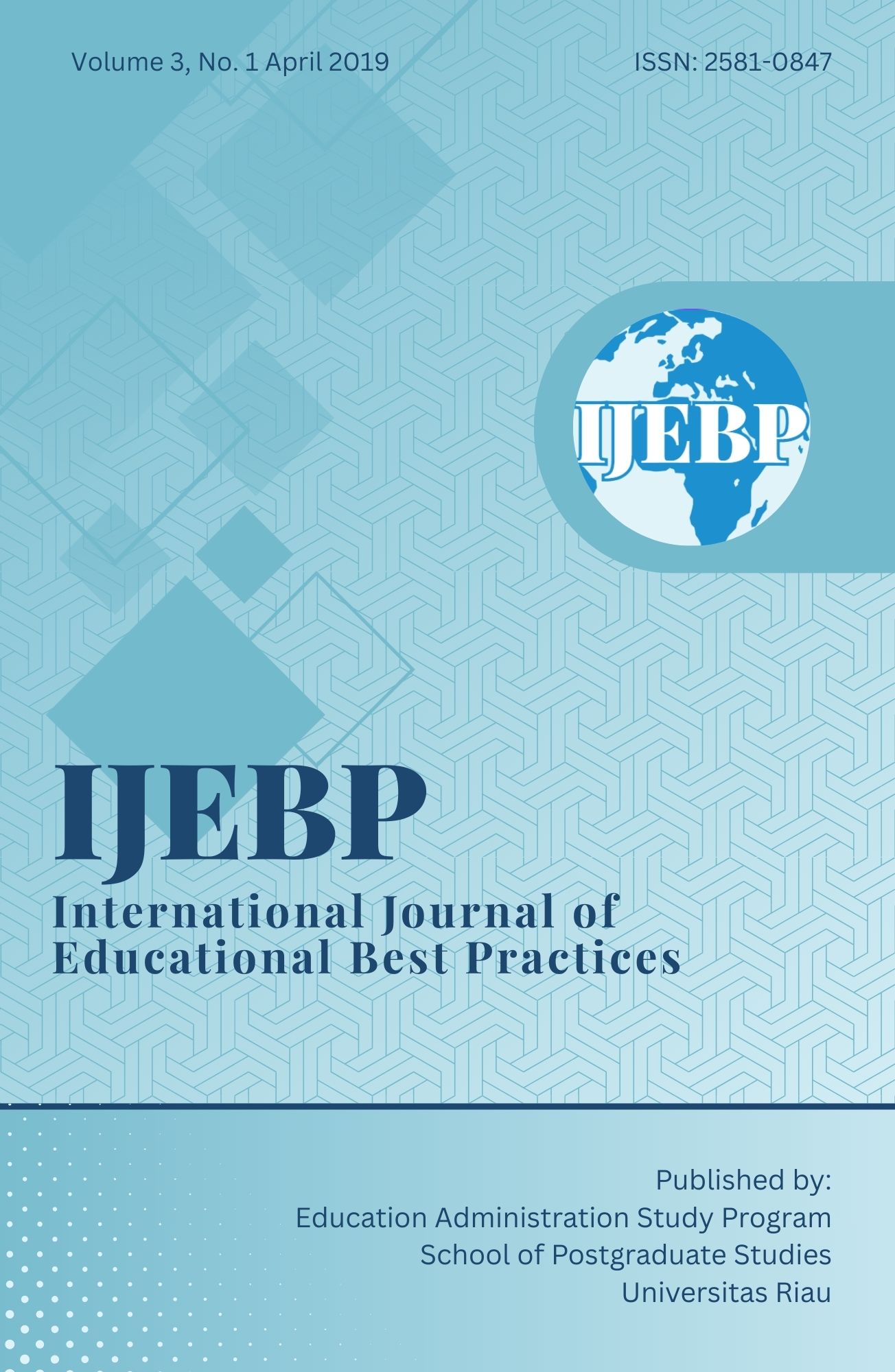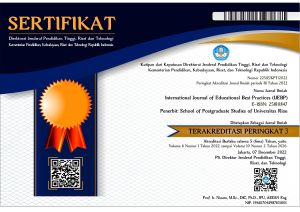THE EFFECT OF TEACHING STRATEGIES AND SELF CONFIDENCE ON STUDENTS’ ABILITY IN WRITING DESCRIPTIVE TEXT IN AN INDONESIAN SCHOOL
DOI:
https://doi.org/10.31258/ijebp.3.1.15-28Keywords:
roundtable strategy, three phase strategy, self-confidence, writingAbstract
In teaching writing, teaching strategy and students’ self-confidence influence students’ writing skill. The research was conducted to find out the effect of Roundtable Strategy and students’ self-confidence on students’ writing skill of descriptive text. The design of this research was quasi experimental with 2x2 factorial design. The population of this research was the VIII grade students of SMP Tri Bhakti Pekanbaru, 2015/2016 academic year. Writing test and self-confidence questionnaire were used as the research instruments. Then, the data were analyzed by using t-test formula and two ways Anova. The result of this research shows that (1) students who were taught by using Roundtable Strategy had better writing skill in writing descriptive text than those who were taught by using Three Phase Strategy. It was proven by the result of t-test which showed that tobserved was bigger than ttable, (2) students with high self-confidence who were taught by Roundtable Strategy had better writing skill in descriptive text than those who were taught by using Three Phase Strategy, (3) students with low self-confidence who were taught by Roundtable Strategy had better writing skill in descriptive text than those who were taught by using Three Phase Strategy, and (4) there was no interaction between both strategies and students’ self-confidence toward students’ writing skill, where Fobserved (0.004) was less than Ftable (3.39). In conclusion, Roundtable Strategy had a significant result on students’ writing skill than Three Phase Strategy and there was no interaction between teaching
strategies and students’ self-confidence toward students’ writing skill.
References
Barkley, Cross & Major. (2005). Collaborative Learning Techniques: A Handbook for College Faculty. San Francisco: Jossey Bass
Brown, H. Douglas. (2003). Language Assessment: Principles and Classroom Practices. New York: Pearson Education Inc.
Ebata, Makiko. (2008). Motivation Factors in Language Learning. The Internet TESL Journal, Vol. XIV, No. 4. http://iteslj.org/Articles/Ebata-MotivationFactors.html
Gay, Lorraine.R., Geoffrey E. Mills, & Peter, Airasian. (2011). Educational Research Competencies for Analysis and Application 10th ed. New Jersey: Pearson Education, Inc.
Hanton, Sheldon., Mellalieu, Stephen. D., & Hall, R. (2004). Self-confidence and anxiety interpretation: A qualitative investigation”. Journal of Sports Sciences, Exercise 5 (2004) 477–495
Haydar, A.S, Avcu, Ramazan, Isiklar A. (2010). Analyzing Undergraduate Students’ Self-Confidence Levels in Terms of Some Variables. Procedia Social and Behavioral Sciences, 5, 1205-1209.
Kagan, Spencer. (1994). Cooperative learning. San Clemente, CA: Kagan Cooperative learning.
Kagan, Spencer & Kagan, Miguel. (2009). Kagan Cooperative Learning. San Clamente: Kagan Publishing.
Manning, Philip & Ray, George. (2009). Shyness, Self-Confidence and Social Interaction. Social Psychology Quarterly 1993, Vol. 56, No. 3, 178-192.
Olson, Joshua L. (2008). A Literary Review of Engaged Learning and Strategies That Can be Used in Planning and Implementing Instruction That Engages Students in the Learning Process. Wisconsin: American Psychological Association.
Oshima, Alice & Hogue, Ann. (2007). Introduction to Academic Writing. Third Edition. New York: Pearson Education Inc.
Wang, Xiaoying. (2007). Three ways to motivate Chinese Students in EFL Listening Style. Asian EFL Journal, 17, (2), 1-16.
Willis, Judy. (2007). Cooperative Learning is a Brain Turn-On. Middle School Journal. Page 4-13
Wu, W.-C.V., Yen, L. L., & Marek, M. (2011). Using Online EFL Interaction to Increase Confidence, Motivation, and Ability. Educational Technology & Society, 14 (3), 118–129.
Xiuping, Zhang. (2002). The Combination of Traditional Teaching Method and Problem Based Learning. The China Papers, Vol. 1, October 2002. From http://science.uniserve.30 edu.au/pubs/china/vol1/
Yashima, Tomoko. (2002). Willingness to communicate in a second language: The Japanese EFL context. Modern Language Journal, 86, 55-66.
Yashima, Tomoko., Zenuk-Nishide,L. & Shimizu, Kazuaki. (2004). The Influence of Attitudes and Affect on Willingness to Communicate and Second Language Communication. Language Learning, 54, 119-152.





